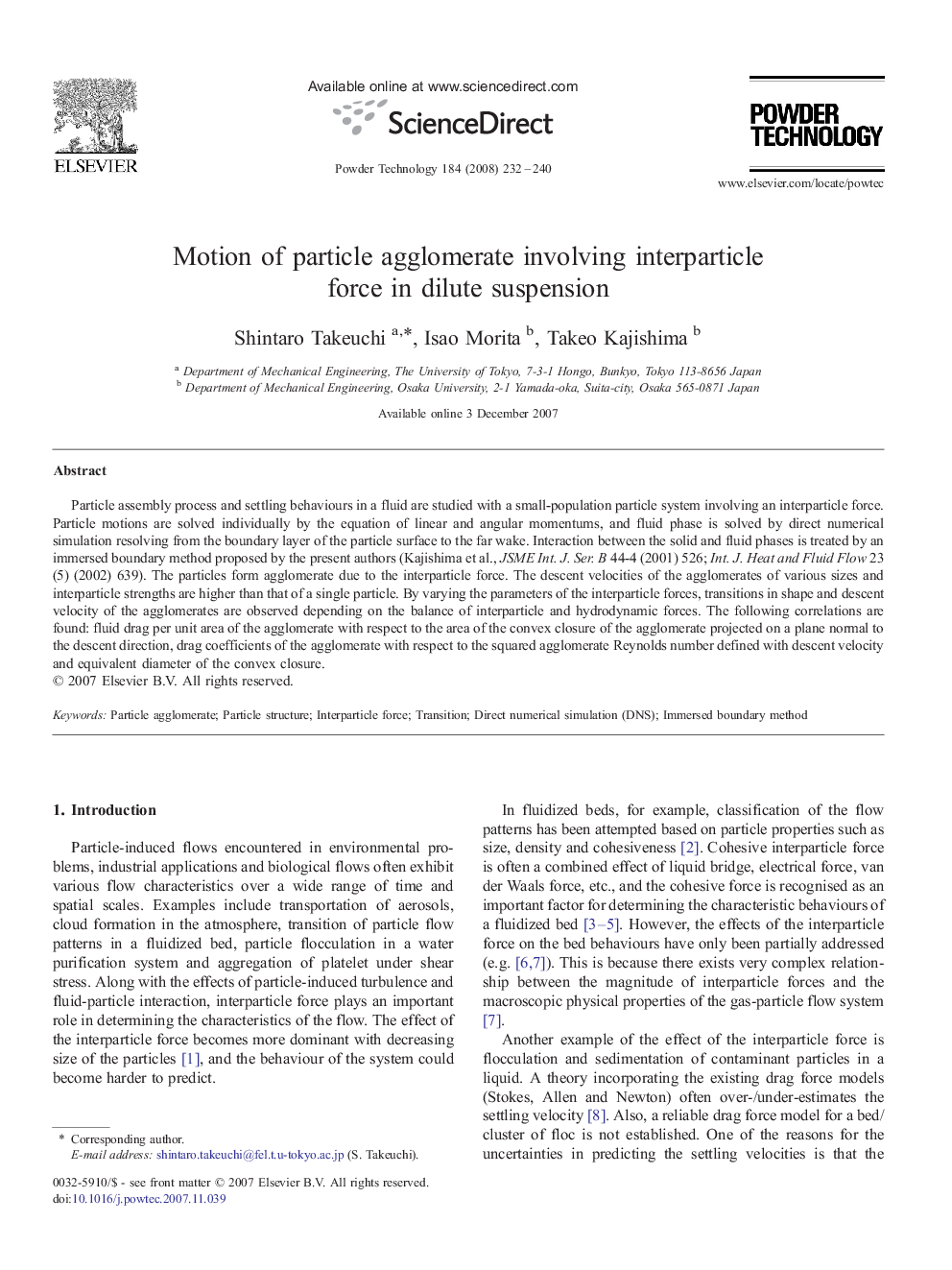| Article ID | Journal | Published Year | Pages | File Type |
|---|---|---|---|---|
| 238854 | Powder Technology | 2008 | 9 Pages |
Particle assembly process and settling behaviours in a fluid are studied with a small-population particle system involving an interparticle force. Particle motions are solved individually by the equation of linear and angular momentums, and fluid phase is solved by direct numerical simulation resolving from the boundary layer of the particle surface to the far wake. Interaction between the solid and fluid phases is treated by an immersed boundary method proposed by the present authors (Kajishima et al., JSME Int. J. Ser. B 44-4 (2001) 526; Int. J. Heat and Fluid Flow 23 (5) (2002) 639). The particles form agglomerate due to the interparticle force. The descent velocities of the agglomerates of various sizes and interparticle strengths are higher than that of a single particle. By varying the parameters of the interparticle forces, transitions in shape and descent velocity of the agglomerates are observed depending on the balance of interparticle and hydrodynamic forces. The following correlations are found: fluid drag per unit area of the agglomerate with respect to the area of the convex closure of the agglomerate projected on a plane normal to the descent direction, drag coefficients of the agglomerate with respect to the squared agglomerate Reynolds number defined with descent velocity and equivalent diameter of the convex closure.
Graphical abstractParticle agglomeration process and settling behaviours in a fluid are studied by direct numerical simulation in a small-population particle system involving an interparticle force. By varying the parameters of the interparticle forces, several correlations (e.g. fluid drag per unit area of the agglomerate with respect to the area of the convex closure of the agglomerate projected on a plane normal to the descent direction) are found regardless of the shape and size of the agglomerates.Figure optionsDownload full-size imageDownload as PowerPoint slide
